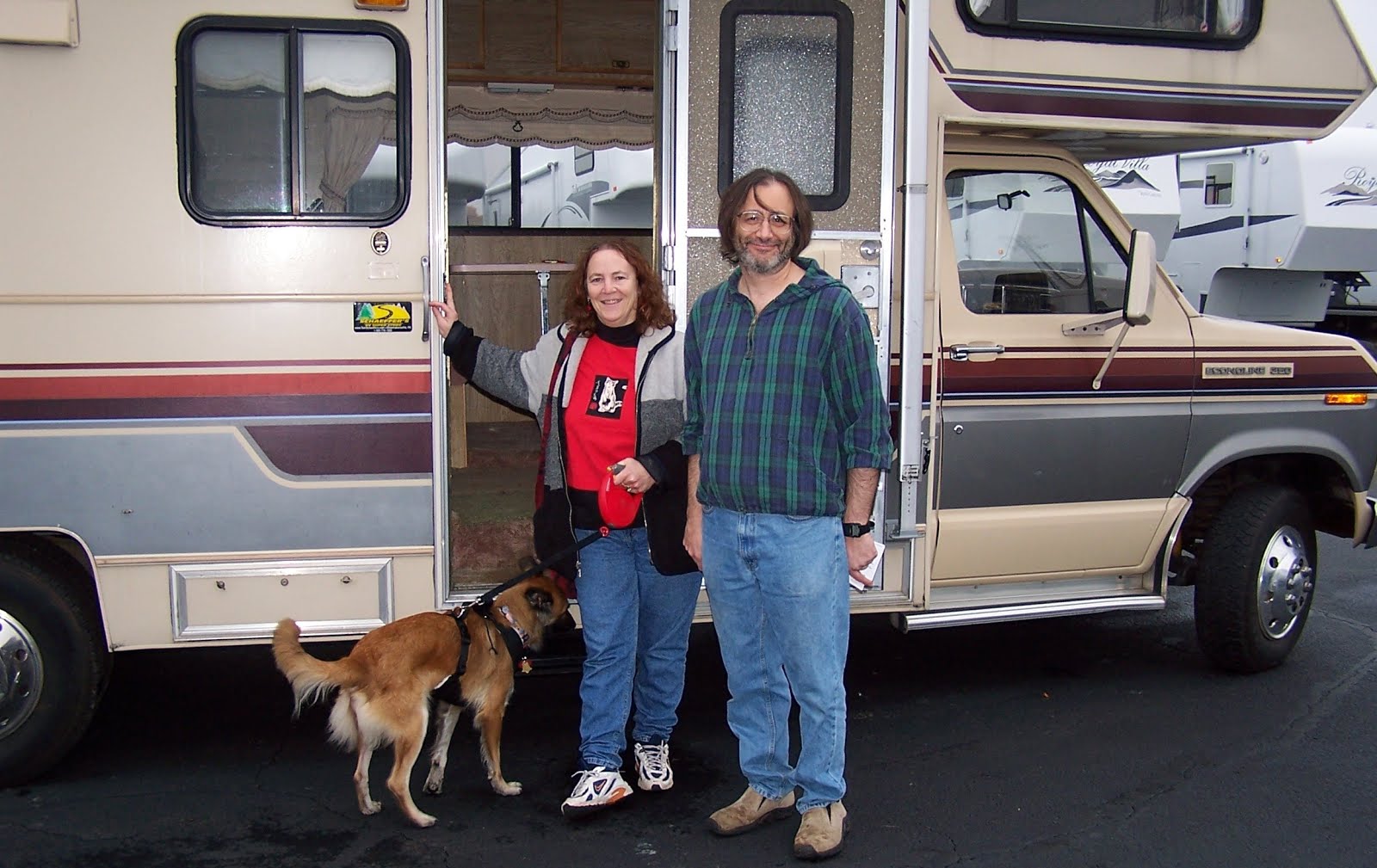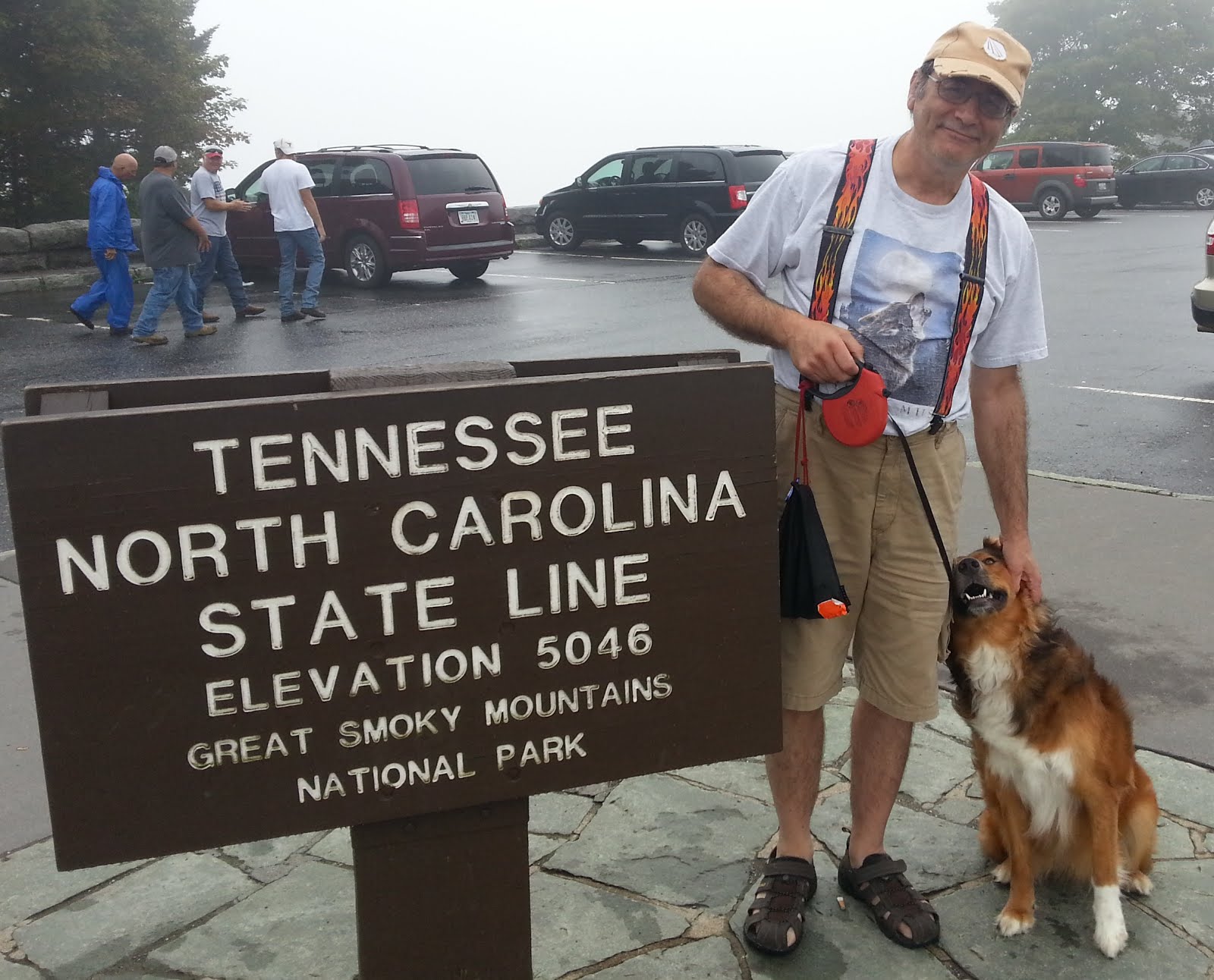
 Of course, the Amish family at the K-Mart just arrived in the morning to shop; they didn't spend the night :)
Of course, the Amish family at the K-Mart just arrived in the morning to shop; they didn't spend the night :)For those who wonder, Walmart is only one of the standby places for people who need to sleep and don't care too much about the amenities. Cracker Barrel and Cabela's are among the chains which invite RVers to stop overnight. Interstate rest areas are of course always available; even when they say "no overnight stopping" or other such warnings, no one is going to bother you if you are there. Since we have everything we need--water, heat, electricity, etc--and sometimes all we want is to just stop driving and SLEEP, it seems crazy to spend $30-40 just to pull in, go to sleep, and leave in the morning. The advantages of campgrounds include showers and wifi; but not all campgrounds have those either (state parks may not have much in the way of showers, and of course not even all private campgrounds have wifi; none of the state or national parks do.) So we use all the available options and are quite happy pretty much anyplace.
Anyway, back to yesterday morning: we spent the morning and early afternoon in Amana, Iowa. The Amana Colonies were settled by a group of German immigrants who were known as the Communityof True Inspiration. They lived and worked communally, and built 7 villages in Iowa just west of Iowa City. They are known for the excellence of their handiwork--they began with all the rural skills of weaving, woodworking, etc. In 1932 they gave up their communal lifestyle and formed the Amana Society, a profit-sharing corporation, to manage the farms and other businesses which were formerly owned by the entire group.
It turned out that many of the Amana Heritage Sites were closed on Friday, but all the little shops in Amana were open, as was the Amana Museum. So we walked around the village, which was very quiet and peaceful. We went to the Museum, but spent more time in the shops. We especially liked the Amana Furniture and Clock Shop. They had exquisite furniture and wonderful clocks (although the clocks were mostly not made at this shop.) There was also a visitors gallery so we could see the actual workshop and watch the men working. Another place we stopped was a small place with a large, wonderful garden filled not just with flowers but with wire trellises and other garden decorations.

At about 2pm we quickly ate some lunch, realizing it was getting late and we had to move along. There was a lot more there to see; as usual, we will have to come back! Anyway, at that point we started driving and made it through the rest of Iowa, crossed the Mississippi into Illinois, and went halfway through Indiana before we finally had to stop.
As I said, we got off the Indiana Toll Road (as I-90/I-80 are known there) and went to the town of Sturgis, as indicated by our Next Exit book, to find the Walmart. It was not until this morning, when we got back on the Interstate, that we discovered that Sturgis was actually in Michigan! I-80/90 runs right at the state line and although we only drove about a mile or so from our exit, it was enough to take us over the line. So it seems we inadvertently added a 12th state to this year's adventure.
We had no plans for today--our intention was to drive all day and arrive in Bellefonte, PA in the evening, and take our nephew Ben, who is at Penn State, out to dinner. We did have a brief stop on the way, however, to pick up a couple of replacement headlights. One of ours had been flickering last night, and this morning seemed dead. Joe checked it out today and bought replacements, but it seems it was the connector and not the headlight. It is all fixed again; he did the job in 30 minutes while I browsed in the Goodwill Store next door to the Advance Auto Parts. Then we returned to the highway.
We arrived at the Fort Bellefonte Campground tonight just at 7 pm. It is lovely, with gardens galore, animals (chickens, rabbits and goats), and wonderful grass. Roxy was ecstatic to run in the grass--I think she is heartily sick of this RV! Ben came up and met us (we are only about 15 minutes from State College), and we went out to a lovely dinner. And now it is about 11 pm and time for bed again. Tomorrow is our 39th anniversary, and we have to go home. But next year, for our 40th, I am hoping that we will be taking a one-month-long trip to celebrate. Meanwhile, I am planning to spend a few more weekends this month RV-ing. It is just too much enjoyment not to do it more often!
























.JPG)



























